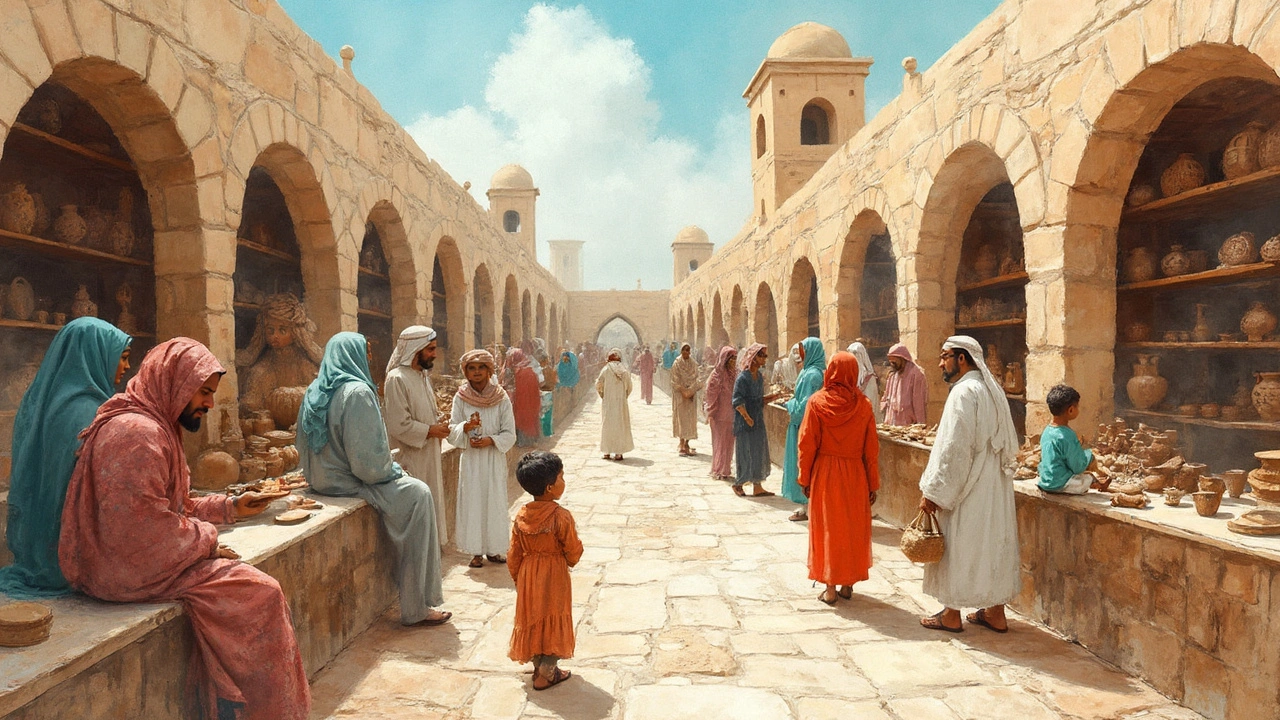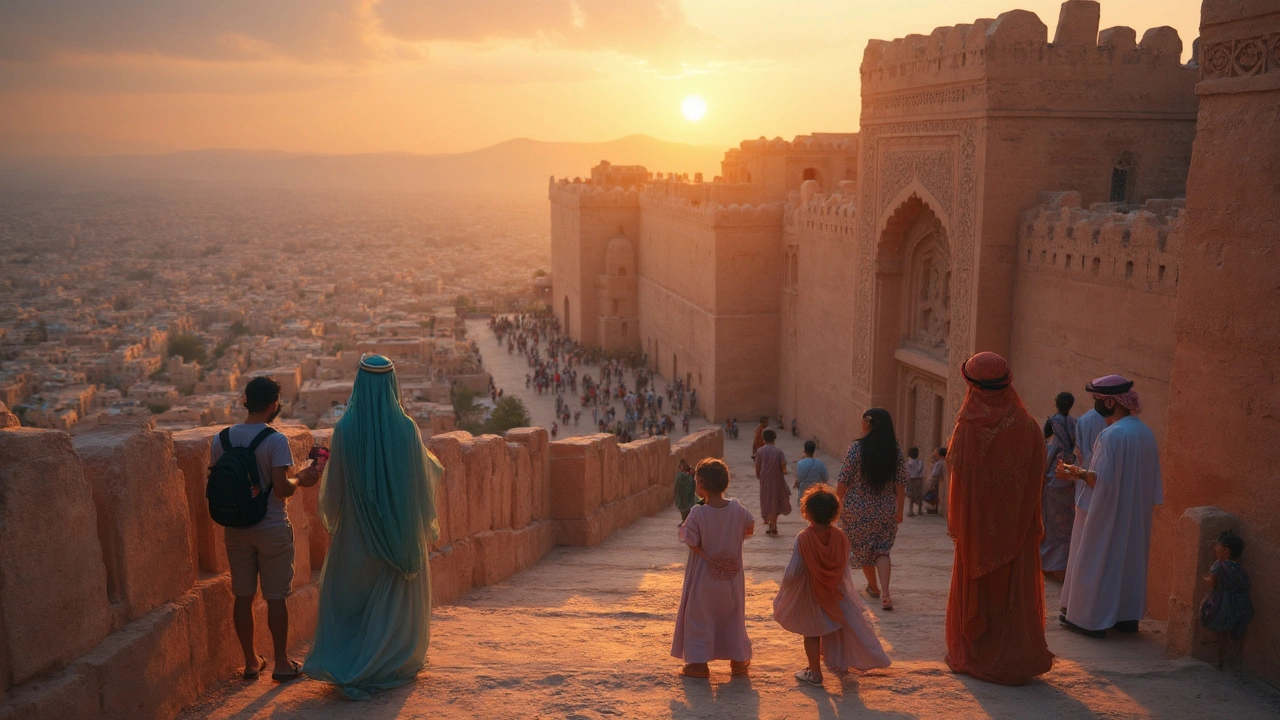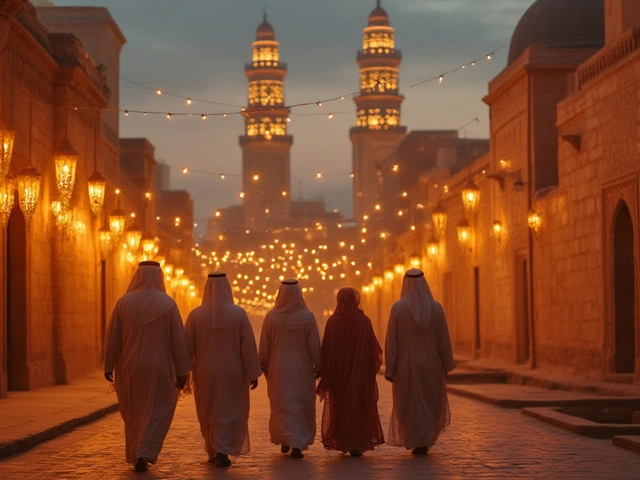Ever wondered why people get so excited about old forts, ancient temples, or those weird stone ruins in the middle of nowhere? Historical sites aren’t just for history buffs or school field trips. These places hold the secrets of how we got here, and honestly, they give you real stories that make classroom lessons look tame.
Visiting a historical site is like having a time machine you can actually touch. Want to know how people solved problems before Google, or what sparked those wild revolutions? The buildings, streets, and artifacts you see up close tell it straight. You instantly get a sense of scale that no picture can give.
The coolest part? These sites aren’t just about kings and dates. Some teach you about grassroots movements, local legends, or everyday folks who changed the world quietly. You might leave feeling inspired—or even a bit wiser about decisions you make today.
If you’re curious, you can usually find a historical landmark closer than you’d think. Even small towns often have a local site or hidden memorial with crazy backstories. And trust me, stumbling onto a site with a story you’ve never heard beats scrolling through another boring video. Ready to see what the past can teach you? You’re in for a surprise.
- Quick Facts Why Historical Sites Matter
- What Historical Sites Teach Us
- Types of Historical Sites and How to Explore Them
- Easy Tips for Visiting and Learning from the Past
Quick Facts Why Historical Sites Matter
If you've ever thought of historical sites as “just old stuff,” think again. These places are packed with stories, lessons, and even economic benefits that most people don’t realize.
- Preserving heritage: Every site you see survived wars, disasters, and time itself. They carry traditions, skills, and real-life stories that show how communities lived before us.
- Boosting local economies: The World Travel & Tourism Council says heritage tourism pumps billions into global economies each year. Visiting local landmarks keeps small businesses running.
- Hands-on history: Studies by the American Alliance of Museums show that people remember more from seeing or touching artifacts versus just reading about them. That old castle or battlefield sticks in your memory way longer than a page in a textbook.
- Respecting different cultures: Sites make it easier to understand and appreciate stories from cultures other than your own—think of it as live empathy training.
- Warning signs from the past: These places remind us of mistakes, disasters, or triumphs—whether that’s a concentration camp or a site of amazing invention—so we don’t end up repeating what went wrong.
| Fact | Why It Matters |
|---|---|
| UNESCO estimates over 1,100 World Heritage Sites | Shows just how many places worldwide are valued enough to protect for future generations |
| A historic site visit boosts city tourism by up to 24% | Drives local jobs, hotels, and services—your visit isn’t just fun, it helps out real people |
So if you’re eyeing your next trip, remember: a visit to a historical site isn’t just educational. It shapes communities, keeps unique cultures alive, and gives you stories you won't find on social media.
What Historical Sites Teach Us
It’s easy to skim through a history book and skip the dry facts, but visiting historical sites flips things upside down. You actually see, feel, and sometimes even smell what life was like ages ago. These sites bring real lessons you can’t get from a screen. Here’s how:
- History Comes Alive: Go to Independence Hall in Philadelphia and you’re standing in the place where the US Declaration of Independence was signed. Suddenly, the idea of “freedom” isn’t just a word—it’s something people risked everything for, and you’re right where it happened.
- Everyday Stories Get a Voice: When you visit preserved tenement buildings in New York City, you learn how regular immigrants squeezed into tiny rooms just chasing a better life. Real stories of families, not just famous leaders, sink in.
- Warning Signs and Red Flags: Walk through a site like Auschwitz and it’s impossible not to feel the intense weight of what can happen when society loses its way. Sites like this don’t just educate; they push us not to make the same mistakes.
- Progress You Can See: Places like Selma’s Edmund Pettus Bridge remind us of huge battles for civil rights. When you walk across that bridge, you sense how hard-won change really is—and how it’s still not finished.
Want some numbers? In a 2019 study by the National Trust for Historic Preservation, over 60% of Americans said trips to historical sites gave them a much deeper understanding of the nation’s story than they got from classrooms or media. That’s not just a minor jump—that’s a total level up in learning.
| Famous Site | Known For | Key Lesson |
|---|---|---|
| The Alamo (Texas) | 1836 battle for independence | Sometimes, standing your ground matters—even against the odds. |
| Great Wall of China | Ancient fortification | Human determination can reshape landscapes—and history. |
| Auschwitz, Poland | World War II concentration camp | The impact of hate unchecked and the power of remembrance. |
| Ellis Island, NYC | Immigration gateway | The hope and struggle behind America’s diversity. |
So next time someone tells you that history is just in the past, point out that these historical sites show how every decision and story still matters today. Seeing their lessons in person is a major wake-up call.

Types of Historical Sites and How to Explore Them
When people hear "historical sites," they usually picture big things like ancient pyramids or castles. But the world of historical sites is a lot broader and way more interesting. Here’s how to break it down and make the most out of your visits.
Types of Historical Sites you’ll spot pretty much anywhere:
- Monuments and Memorials: These could be statues, plaques, or entire parks. Think of the Lincoln Memorial in DC or the small-town soldiers’ monuments.
- Architectural Landmarks: This means old buildings, bridges, or even whole districts left from another era. The Colosseum in Rome tops the list, but you’ll also find 1800s train stations, lighthouses, or even diners that tell local stories.
- Archaeological Sites: These are digs and ruins, like Machu Picchu or local Native American mounds. Places like Greece and Peru get all the fame, but even your state might have a cool archaeological site.
- Battlegrounds: Sites of major conflicts like Gettysburg or Normandy. You can usually tour these and learn about what happened from guides or signs.
- Museums and Living History Villages: Some museums are the site themselves, like Anne Frank’s house in Amsterdam, or are part of a community where you walk and see reenactments.
How do you actually explore these places and get decent value from your visit? You don’t have to be an expert—but knowing a few easy tips helps a lot.
- Check for guided tours or downloadable audio guides. These make a massive difference. A guide might share facts or stories you’ll never find on a sign.
- Visit early or late in the day to beat crowds, especially at popular spots. You’ll take better photos and have more time to explore quietly.
- Use sites like the National Park Service’s "Find a Park" in the U.S. or UNESCO’s official website to discover major and lesser-known historical sites.
- Bring questions—guides usually love to share odd facts or local myths if you just ask.
- Respect the rules, especially at archaeological sites. Don’t touch, and stick to marked paths. Some places are fragile and easily damaged, even by careful visitors.
Wondering where people spend their time? Here’s some quick data on the most visited global historical sites in 2024:
| Site Name | Country | Visitors (Annual) |
|---|---|---|
| The Great Wall of China | China | 10 million |
| The Louvre | France | 7.5 million |
| Colosseum | Italy | 7 million |
| Machu Picchu | Peru | 1.5 million |
That’s just the tip of the iceberg. Even if you’re not traveling to global icons, digging into your local or regional sites can surprise you. Grab a friend, look up a nearby historical site, and find out what happened right under your nose. You might just discover your new favorite day trip spot—and some wild tales your history class never mentioned.
Easy Tips for Visiting and Learning from the Past
Ready to get the most out of your next trip to a historical site? You don’t need to be a history expert or join a big tour group to learn something new. Here are some straight-up tips that actually work.
- Do a quick search before you go. Even five minutes on your phone looking up the site’s main story or big events is worth it. You’ll spot stuff that most walk right past—like secret symbols carved into old stones or why that one statue is missing its arm.
- Use official guides or audio tours. Tons of places now have free or cheap audio tours you can download. These make the experience way more personal. Bonus: they often have cool side stories, not just dates and names.
- Look for local volunteers or workers. Many sites have passionate folks who love to share the juiciest stories. Ask what’s their favorite fact about the place. You’ll get info you won’t find on any sign.
- Respect the site. Remember, a lot of these places are super old. Don’t touch, climb, or leave trash—preserving them keeps the past alive for everyone to enjoy.
- Snap photos, but also put your phone away. Take a few shots for memory’s sake, but then actually walk around. Soak it in. You’ll remember it better than any filter can capture.
Want to plan it out? Here’s a simple checklist to help:
- Check opening hours and tickets online. Some places fill up fast, especially famous spots like the Alhambra in Spain—last year, over 2 million people visited!
- Wear comfortable shoes. You could be on your feet for hours, especially at big sites like Angkor Wat or Gettysburg.
- Pack water and snacks (if allowed). Trust me, exploring ancient ruins in the heat gets tiring quick.
If you’re curious about how much people care for these places, check out the data below:
| Historical Site | Annual Visitors | Country |
|---|---|---|
| Great Wall of China | 10 million | China |
| Colosseum | 7.6 million | Italy |
| Liberty Bell | 2 million | USA |
After visiting, share what you learned. Post a quick review or story online—even a couple of sentences can help others see why these historical sites matter. Your fresh perspective might inspire someone else to give history a shot.







